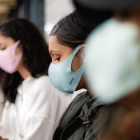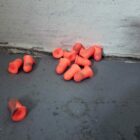DIY and Hobbyist Safety Tips
Accidents caused by DIY or hobbyist work lead to thousands of people ending up in the ER every single year. With the sharp increase in DIYers and hobbyists out there, it is very important to keep safety at the top of your priority list. So, before you power up the table saw or scurry up your aluminum ladder to fix the gutters, here are some DIY and Hobbyist safety tips that could help you prevent a serious accident or injury.
Have a Clean Work Area For Improved Safety
This one is simple and should be the easiest thing in the world for any DIYer to implement. If you keep your work area clean and clear of clutter, you will be less likely to have an accident. Whether you are working in the shop or doing yard work, clean up the area before you start working. Besides the safety benefit, it is also much more enjoyable to work in a clean space!
The 4 to 1 Rule For Safe Ladder Placement

It’s simple. For every 4 feet of ladder height, move the base of the ladder an additional 1 foot from the wall it is resting on. Never use a ladder without reading all warnings and instructions that it came with. Also, make sure that the ladder you are using is the best ladder for the job. The last thing you want to do is put yourself high above the ground only to have to stretch even higher to reach the work area. If the ladder isn’t tall enough, skip the project until you have the proper equipment!
Avoid Unnecessary Fashion Accessories
Things like watches, rings, bracelets, necklaces, etc can be a real hazard when operating machinery or power tools. We hear a lot of talk about wearing baggy or loose clothes when operating power tools, but we rarely hear about accessories. If it dangles away from your body, take it off before working.
Include a First Aid Kit in Your Inventory of Tools

No workshop should ever be without a proper first aid kit. Make sure it is stocked with bandages, anti-bacterial ointment, gauze, and other important items. Keep it easy to access as well. Wouldn’t be much good buried beneath a mountain of other stuff, would it?
For Style AND Safety, Incorporate Better Looking Safety Gear
I know this one seems silly, but there are some very fashionable Safety Glasses out there that you will be more likely to actually use because you don’t feel like a doofus wearing them. The worst safety accessory you could possibly have is the one you won’t use.
DIY and hobbyist safety precautions shouldn’t be any different from general safety precautions. Common sense goes a long way. A great rule to follow is that if something feels in any way unsafe with something you’re working on, stop and reassess the situation. Figure out a safer way of doing the job. With proper safety precautions, we urge everyone to continue tackling jobs around the house and yard!
OSHA Rules for Eye and Face Protection Have Been Updated
 New OSHA rules for eye and face protection were published in the US Federal Register on March 25, 2016. Affected companies–which include all employers operating in general industry, shipyards, longshoring, marine terminals, and construction–should reference the full text of the Federal Register as well as the updated consensus standard which has been incorporated by reference, ANSI/ISEA Z87.1-2010 – Occupational and Educational Personal Eye and Face Protection Devices.
New OSHA rules for eye and face protection were published in the US Federal Register on March 25, 2016. Affected companies–which include all employers operating in general industry, shipyards, longshoring, marine terminals, and construction–should reference the full text of the Federal Register as well as the updated consensus standard which has been incorporated by reference, ANSI/ISEA Z87.1-2010 – Occupational and Educational Personal Eye and Face Protection Devices.
Changes are summarized in a media release from MSA Safety (Doc. ID: 0300-05-MC, April 2010). Noteworthy excerpts with underlined formatting for emphasis:
- Users will need to be educated on matching the hazard from which they need protection with the marking on the product.The Z87 ASC also made efforts to harmonize with other eye and face protection standards used around the world. Many of the tables in this standard reflect this effort to harmonize with global standards.
- Extended side protection. Spectacles with thin temples (metal frame or thin plastic) will require side shields if they do not pass the extended side coverage requirements.
- In Z87.1-2003 protective products are marked as providing “Basic” or “High Impact” protection. In the Z87.1-2010 standard, the products are either non-impact or impact protectors. Products marked as impact protectors must pass all high-impact testing requirements and will be marked as “Z87+”. Non-impact protectors are those which do not pass all high-impact testing requirements and are therefore marked only with “Z87” (no “+” sign).
- In the Z87.1-2003 standard, protective products are defined as primary and secondary protectors; primary eye protection should be used under secondary protection (i.e., safety glasses must be worn under visors). This is changing in the Z87.1-2010 standard.
Manufacturers adhering to ANSI/ISEA Z87.1 will be keeping pace with new testing and marking specifications. That said, it takes time to deplete existing inventory, test, adapt, manufacture and distribute new models. Changes are gradual and that is precisely why OSHA is adopting the 2010 standard now, in 2016.
Companies can continue to distribute and use PPE determined by hazard assessment to adequately protect against site and task-specific hazards – even if it is marked according to the specifications of previous 1989 and 2003 versions of the ANSI standard.
As the useful service life of existing PPE requires replacement, companies should ask distributors to provide eye and face protection that bears the newly required markings. But first companies need to reassess and revise eye and face PPE recommendations with increased type, use, shade and filter specificity in mind.
OSHA “direct final rule” cadence incorporating industry requirements from prior years suggests future changes as the consensus evolves. Companies would do well now to consider the newer 2015 version of ANSI/ISEA Z87.1 while referencing the recently incorporated 2010 version.






